Jennifer Jennings arrives first. When Phillip McMahon joins us he apologises for his socks. They’re not white, he points out, but pale green. White sports socks are one of a multitude of references that pop up in the work of Thisispopbaby, their company, cumulatively building a glorious Irish cultural mash-up.
White socks, GAA kit and crisps figure in Ronan Brady’s opening to their show Riot, on a giant cyr wheel, and recur in their new production of Wake, during a superlative jig-strip-aerial turn by the Irish dancer Michael Roberson that shows how the production draws on a multitude of bits of who we are to make something new and exhilarating.
An exuberant, life-affirming explosion that they first staged at the National Stadium in 2022, after creating it with the artist and designer Niall Sweeney, the show is a riff on the Irish wake as a celebration of life. That all-encompassing framework pulls together a raft of standout turns, including overlapping and merging trad and pop, acrobatics and circus, spoken word and story, and many flavours of dance, comedy and cabaret.
This remix of eclectic Irishness – proud, moving, skilful and lots of fun – was originally planned pre-Covid, to open at the Irish Arts Centre in New York. “Sometimes the world changes in the middle of your process,” says McMahon. “Suddenly, the show becomes more urgent. Of course, the Irish wake is not about death but about ushering in change and transformation. And so, post-Covid, the entire show became this metaphor for renewal, rebirth, reawakening.”
READ MORE
Wake was a hot ticket two years ago, when more than 7,000 people saw it. It won a judges’ choice award and, for Felicia Olusanya/Felispeaks, the best-performer prize from Dublin Fringe Festival. It’s returning to the National Stadium next month as a headline show of St Patrick’s Festival.
In 2024, says Jennings, “it feels even more urgent and more prescient to us. We’re in this great moment of tumult and existential crisis. The need to gather together and experience things through this prism of the Irish wake feels even more compelling.” McMahon adds, “Everything has accelerated in the world, and I think theatre more than ever remains this urgent invitation to come into an analogue space, listen, watch.”
They have gathered an eclectic family of 14 multiskilled performers. Some are long-term associates, such as the composer and sound designer Alma Kelliher and the choreographer Philip Connaughton – “a fan favourite”, says Jennings – who does a memorable rendition of Mary Coughlan’s I Want to Be Seduced. Adam Matthews is “an extraordinary singer and performer”. Aisling Ní Cheallaigh is “a world-class aerialist”. Deirdre Griffin is an actor, dancer and choreographer. Emer Dineen does a great comic turn as DJ Duncan Disorderly. Jennings came across Jade O’Connor – “she dances, she sings, she’s one of Dunken Disorderly’s crew” – in the duo Femme Bizarre and wrapped her into Wake.
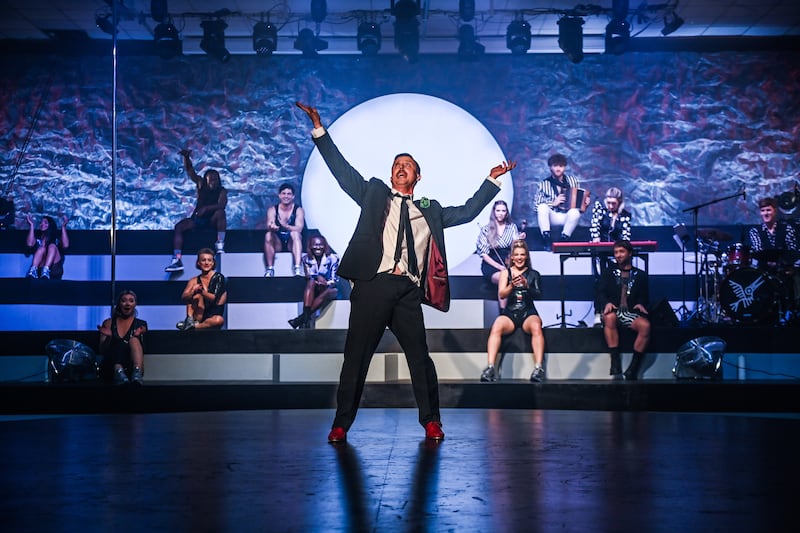
“We’re always on the lookout for brilliant people,” Jennings says. McMahon adds, “In the early days we found people in drag bars or queer clubs.” They also support lots of artists, building relationships over time. “Alternative performers often look to us as a home for their work.”
McMahon tells the story of how Roberson joined. A champion Irish dancer from Little Rock, he auditioned for the planned New York show – “in the movie of it, he steps off the bus from Arkansas into our audition room.” Years later, when Wake switched to Ireland, so did Roberson. He’d seen Ní Cheallaigh perform in early workshops, and was inspired. Between then and rehearsals “he ran away with the circus” – literally, to join the English company Giffords – and arrived back both Irish dancer and aerialist. “He’d committed so much of his life to Irish dancing, and had never danced in Ireland. We thought, We’ve got to bring this guy home!”
In Wake, he moves from GAA shorts to gold-lamé skimpies, from hornpipe to aerial, to a version of Bronski Beat’s insistent Smalltown Boy. “We call him the Paul Mescal of Irish dance,” McMahon jokes.
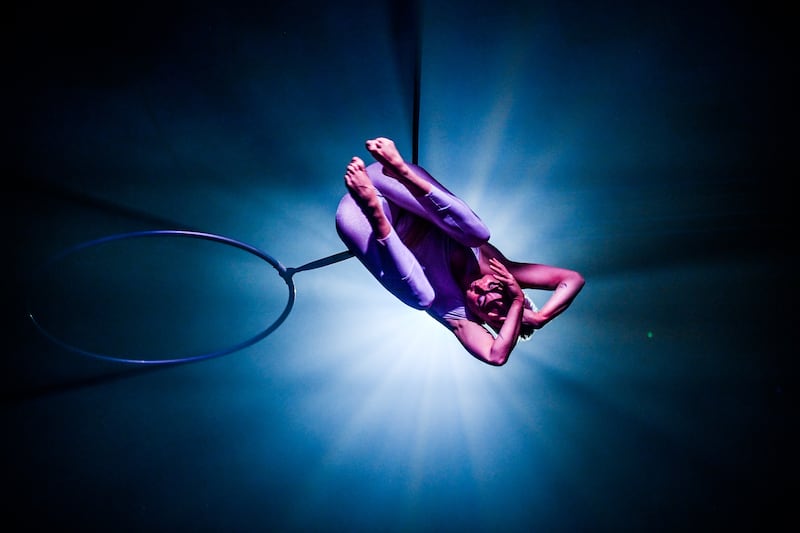
Jennings mentions Lisette Krol. “She’s this amazing world-champion pole dancer, an extraordinary businesswoman, a brilliant artist. She’s Venezuelan, based in Dublin a long time. We first came across Lisette years ago, when she helped us develop the striptease for Ronan in Riot.”
She says, “Philly and I stand in front of a storyboard. We’ll be, ‘Right, what do we need here? What family of performers are we building – the texture of the show, skills? What will the audience need in this moment?’ It’s a blend of physical and theatrical and vocal and musical. And we’re, like, we need a pole dancer. Sometimes that’s how it happens. We identify a need and go find the person. At other times we love a particular performer or creator and we figure out how to fold them into the show.”
Thisispopbaby was born in January 2007. Jennings and McMahon’s lives had run in parallel – both in Dublin Youth Theatre, both living in Australia around the same time – without them ever meeting. She worked in theatre; he was “flitting around, being a bit of an actor, but I loved acting more than acting loved me”. What McMahon saw on stage did not represent his world – “queer, working class, no college education”. The first play he wrote, Danny and Chantelle (Still Here), two ravers’ odyssey, premiered in John Reynolds’s Pod nightclub for Dublin Fringe Festival in 2006. It chimed with Jennings. “It was everything I wanted theatre to be. I came to Philly: ‘I just want to be involved in bringing this back.’ That was the genesis of the company.”
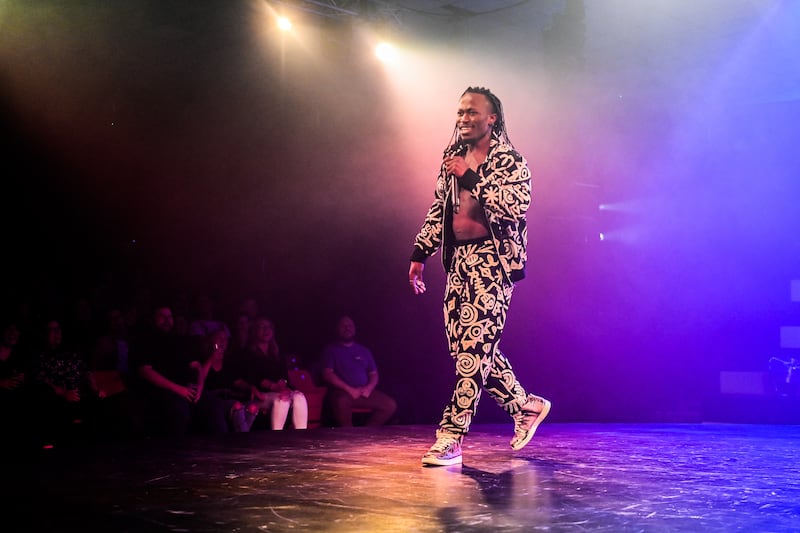
The name? “This is popular culture, baby. We were young!” says McMahon. “It’s always been there to remind us of our impulse and our remit. You kind of have to live up to the name.”
Niall Sweeney hooked up soon after, and “We started to make a lot of heat together”, the designer writes from London. As art director he is “responsible for the visual identity of the company”, including posters, sets and their Electric Picnic tent, says McMahon – “but, more than that, forcing us into the most exciting visual space. Time will remember him for building the biggest and best suite of theatre posters we’ve ever seen.”
Sweeney, who was also a Panti Bliss collaborator, started Alternative Miss Ireland. In sweet circularity, Thisispopbaby revives its Panti show, If These Wigs Could Talk, in New York this June. “He was a legend,” Jennings says. “We persuaded him to be involved in this venture. He said, ‘Okay, I’ll do it. I’m not getting up a ladder, though.’ But he’s been on many, many ladders since. Often his visual response to the provocation of the show, which wouldn’t be made yet, goes on to reinforce the show itself.”
While blurring the boundaries between theatre, nightclub, festival and activism, in Thisispopbaby shows ranging from Alice in Funderland to Conversations after Sex, Jennings and McMahon wear other hats too. She’s now artistic-director-in-residence at University College Dublin, and programmes for the Beyond the Pale festival in Wicklow, while he’s artistic associate at Lyric Hammersmith and a research fellow at Birkbeck Centre for Contemporary Theatre, in London. “We’ve always done a lot of things. It’s part of the magic sauce of Thisispopbaby. It’s a place where a lot of worlds can collide to create something new,” McMahon says.
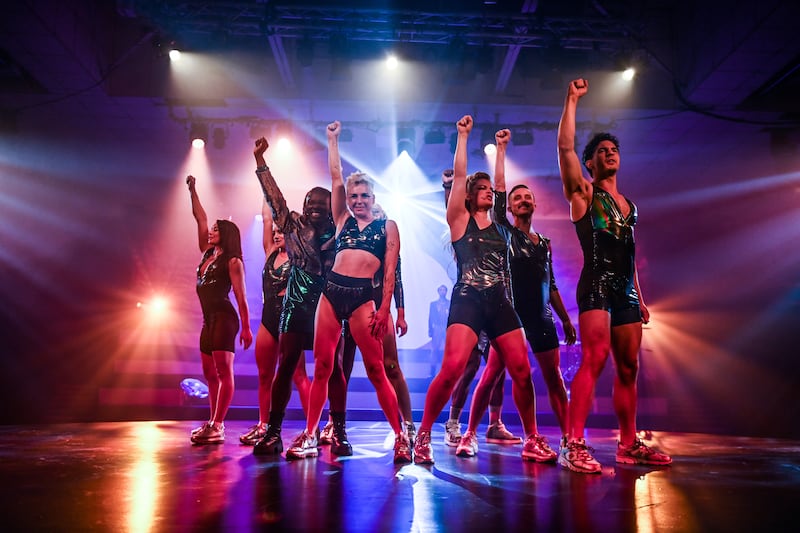
Seventeen years on, the company is in some kind of midlife. “We’re not living on the dance floors any more, the way we used to,” says Jennings. “But I think there’s an enduring philosophy and value system that was formed on the dance floors. And it feels really prescient and vital, and I think that’s what we continue to bring into the work. Notions of creation over consumption, and active citizenship and the power of temporary community” created on a night at the theatre “as a jumping-off point for a longer community”.
McMahon agrees that they’ve probably retired the term “youth culture”. “What we get to bring to it now is experience, knowledge and excellence. We take all that energy we harnessed over the years and can now present these big shows. Younger, alternative, queer, outsider performers see it and go, ‘Oh, there is a world where my work exists.’ That’s something that we didn’t necessarily have ourselves.” And youth culture itself is almost unrecognisable. “Diminishing dance floors is part of that, because dance floors are a place you got to let loose and meet all sorts of people. Now people are on Twitter and locked in their bedrooms.”
“Our engagement with the city feels really important at this moment” says Jennings. “Dublin city has always been this massive character in the work. Everything we do is inspired by the city, feeds back into the city. This is a huge moment in a really big venue. Very few independent theatre companies have done this.”
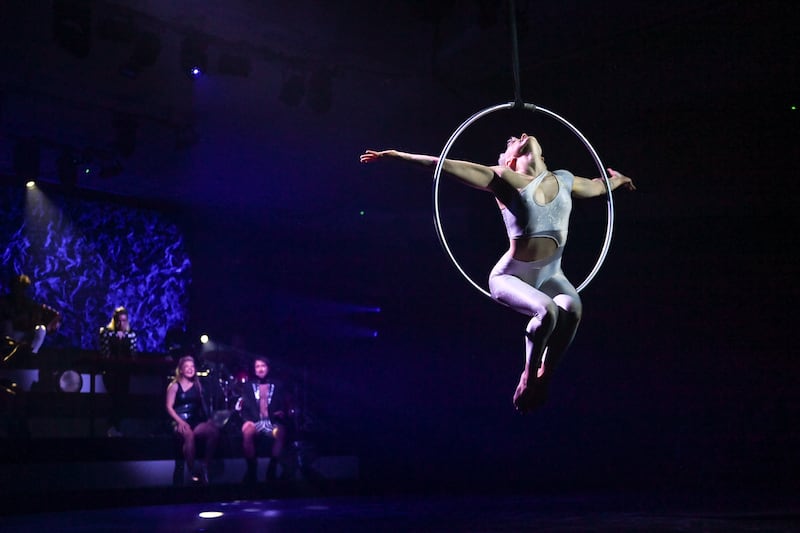
During Wake’s 2022 run the “entire neighbourhood was completely hopping. Every bar and restaurant was jammers.” This time they’re formalising that part of South Circular Road as a Wake Mile, engaging with locals and through ticket-tie-ins to make “a big splash”, and creating a big night out where people can experience “world-class spectacle theatre without having to trek to see it”, says McMahon.
It’s partly about contributing to Dublin coming to life. “We have to live here. We’re going to stay here, make home here. We’ve got to make home a better place for ourselves and others behind us,” he adds, explaining that, rather than bemoan Dublin nightlife, they focus on the positive, “or else we would stop. We’re driven by the desire to offer solutions ... We see culture, art, playing a significant role in that. We also acknowledge the artist supports in the last while have been significant. So let’s follow that rabbit hole. Let’s keep going.”

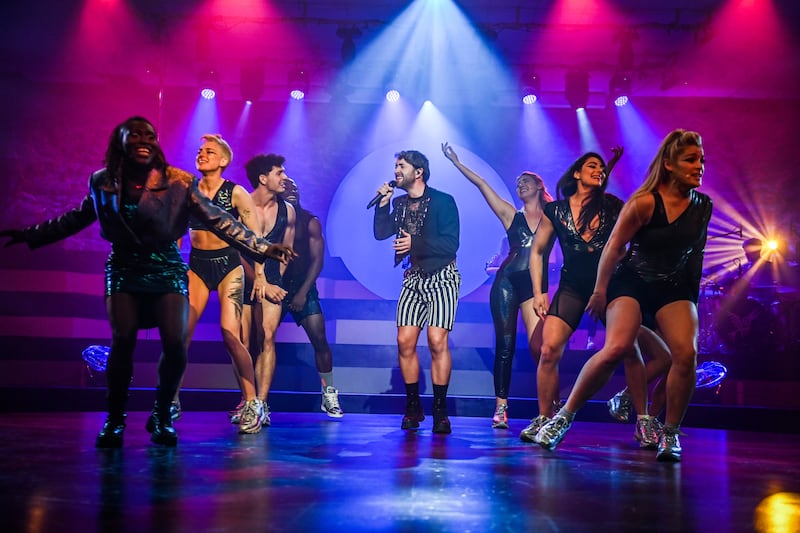
“The city made the company, so the company is compelled to make the city a better place,” says Jennings. McMahon responds, “We’re unwilling to turn our back on Dublin.”
Wake is a stadium show in scale, energy and intention. “We’re a small island, a small ecosystem,” he says. “And scale is discouraged, actually.” But they’re doing “a big theatrical event, made in Ireland. We can collect the best artists. We can offer audiences a massive night out. An independent theatre company doing a show of this scale in a slightly non-traditional venue in Dublin 8. The excitement, the punt on that, is oxygen for us. There’s a lot of energy, a lot of love and a lot of passion in this outing.”
Jennings talks about their Wake ambitions. “We see its potential as a quintessential show of contemporary Ireland, full of these ferociously talented, multidisciplinary, multiethnic performers ... We want to tour the world with it.” It’s “a beast of a show”, says McMahon: 21 people on the road, live band, three aerial points. But “we’re really nimble”, says Jennings. “Riot taught us how to adapt for different venues.”
She invokes the saying about how you need to be invited to a wedding but anyone can go to a wake, “this gathering of music and culture and silliness and sexiness that reconnects and renews and makes it okay for us to go on”. McMahon adds, “Take our traditional culture, add some mirror balls, throw some glitter on it, put a dance feed under it. It’s just lifting the veil between worlds, which is where Wake lives.”
Wake is at the National Stadium, Dublin, from Wednesday, March 6th, to Saturday, March 23rd, at part of St Patrick’s Festival

















